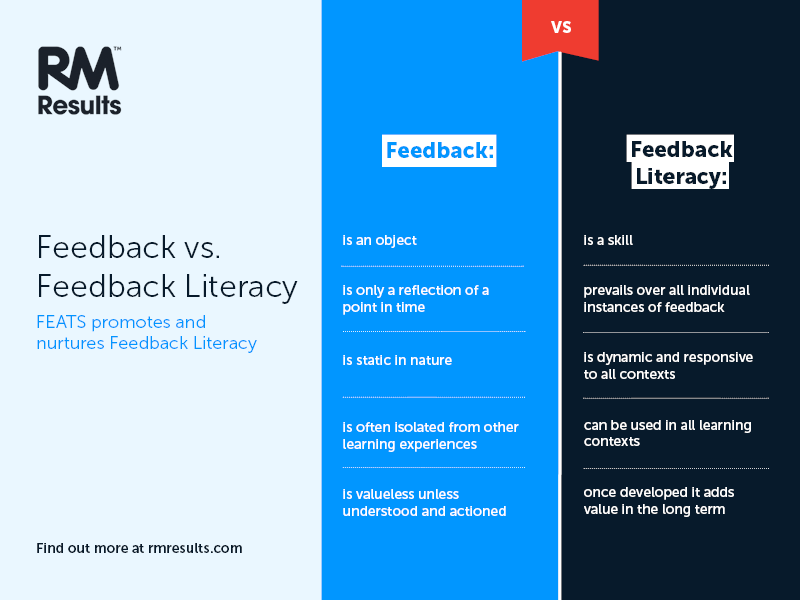Author:
Peter Collison
Formative assessment has increasingly been at the forefront of good learning practice since the 1990s. Assessing students in order to support their learning, rather than relying on tests to provide certification, provides learners and teachers with confidence that the relevant knowledge and skills are being retained and developed rather than being simply learnt for an exam.
Many traditional forms of formative assessment can place an additional burden on teaching staff; frequent and informal assessment can add to workloads with teachers often being responsible for marking learners' work, providing meaningful and actionable feedback and in many cases adapting lesson plans to suit. Embedding digital technology within this assessment pathway allows formative assessment to become easier, as a result of automation possibilities, and increasingly valuable, thanks to its in-depth insight through analytics and feedback.
Find out how technology can enhance formative assessment practices, ease the burden on staff and improve student learning.
Adaptive Comparative Judgement technology facilitates more meaningful and collaborative assessment and feedback
Making decisions on how work is marked often relies on a mark scheme or rubric. Whilst these can provide useful indicators to measure the work of multiple students in a consistent way, it can prove restrictive and limited when assessing more open or subjective work such as creative writing or art and design. This approach can also be very time consuming in a formative assessment and has been shown to negatively impact teacher wellbeing[1].
Marking to strict guidelines can often stifle a teacher’s professional judgement, and in the worst cases, result in good quality work receiving lower marks if it does not “tick the boxes” of the mark scheme. An example of this would be where an engaging piece of creative writing using ambitious vocabulary might be marked down due to spelling mistakes or grammatical errors, compared with a less inspiring piece of writing being marked more favourably.
While exemplar scripts can act as a valuable indicator, these often are not as widely available for formative assessment as they are in summative assessment. Research has shown that side-by-side comparison of work can act as an invaluable tool in providing consistent, clear and comprehensive understanding of standards of work.
Setting and maintaining standards that are consistent across multiple institutions is a challenge for many groups of schools such as Multi Academy Trusts in the UK. Often, there is no clear path to see where a school can improve or how to get there. By using adaptive comparative judgement, schools can randomise who evaluates student work, sharing this across teaching staff and schools, as well as gain access to data that helps identify areas for improvement.
Schools can use adaptive comparative judgement to assess written work whilst helping to reduce teacher workload, support improvements in writing and develop easier methods of collaborating with other schools.
Find out how Church Cowley St. James School brought together 14 previously unlinked primary schools to work together on assessing writing tasks by Year 6 children.
Stealth assessment can provide teachers with information on how each learner is developing skills of inquiry, critical thinking, decision-making and creativity.
Stealth assessment is not a new concept. The term was first used by Valerie Shute in 2005 to describe an approach to performance-based assessments that embeds assessments in digital games in order to measure how students are progressing toward targeted goals. Pop quizzes or online games and learning tools offer stealth assessment in a fun and accessible way. There is sometimes a tendency to think that formative assessment still has to "feel like” a formal assessment, but many digital assessment tools can be embedded in your curriculum delivery, making it second nature to learners.
Using digital tools to assess students frequently and informally, as part of their natural learning processes, can quickly highlight gaps in knowledge and understanding, allowing teachers to intervene and offer additional help. Rather than waiting until a student is assessed at the end of a module or course, teachers can get insights into problem areas before they impact on results.
Good feedback improves student experience and empowers students to achieve their goals
Feedback to the learner is a crucial element of formative assessment. The right digital tools can improve the way feedback is delivered, engaged with by the recipient and utilised as part of their continued development, leading to better learning outcomes.
A recent Jisc report into the future of assessment talks about generating feedback, but less so on how to empower students to act on the feedback they receive. Feedback literacy is a critical skill for learners to master in order to achieve their full potential. Formative assessment tools such as our Feedback Engagement and Tracking System (FEATS) allow students to take ownership of their ongoing development through engagement with the feedback they receive, encouraging them to develop tailored action plans as a result.

How can digital assessment tools help you improve your formative assessment provision?
Instant feedback
If you are using online games and tests, with multiple choice answers, then results to the student are usually instantaneous. If the questions and feedback mechanisms are well designed, learners should receive tailored feedback based on their answers, allowing them to learn which areas they need to improve on.
Fairer assessment processes
With the ability to anonymise assessment responses and even spread the marking or evaluation of work across a wider pool of assessors, digital assessment tools can help eliminate unconscious bias. You can be more confident that work has been assessed and moderated as fairly as possible.
Tools for curriculum and learning change
Looking at the data from all forms of formative assessment teachers can show trends in knowledge and understanding and spot gaps in their teaching. This can inform future curriculum changes and teaching approaches.
Time saving
Using different approaches to assessment, such as comparative judgement, can give schools the confidence to change their approach to marking and feedback of work, reducing the marking burden on teachers.
“RM Compare has reduced the teacher workload hugely – most of our teachers now leave school at half past four and don’t take any books home. The time that we used to spend marking, we can use more strategically – planning and delivering the highest quality of learning in the classroom.”
Steve Dew Head teacher, Church Cowley St. James School
Advanced analytics provide actionable insights to school leaders, teachers and pupils
Accessing analytics from formative assessments is a huge benefit of the use of many digital assessment tools.
The insights that can be derived from data and analytics can shape many areas of your learning and teaching including assessment schedules and formats, curriculum and module design, standard setting, teacher collaboration, student empowerment and knowledge growth.
These insights can help you drive improvement across assessment and learning to positively impact future performance, results and learner engagement.
Cross-comparison
By using data from multiple sites across academies or campuses, you are able to see how different schools or departments are performing against each other, helping you identify priorities for improvement.
Teaching improvement
Spotting peaks or troughs in learner performance or stumbling blocks in knowledge, you can help shape your teaching methods and target any areas where learning is weaker.
Assessment format changes
If you notice that a particular assessment or assessment method is getting consistently poor marks, it’s an opportunity to find out why. If the teaching is good, then is it perhaps the format of the assessment? Making changes to how students are assessed can be just as powerful as changing the learning environment.
Information sharing
By teachers sharing information, grades and results, it encourages an environment of continuous growth and professional development. Learning new approaches as they go along will help to change their approach to teaching.
Formative assessment is changing the way we educate and the way we learn. Using digital assessment tools to develop your own unique formative assessment processes can enhance your opportunities for growth and development.
[1] Jerrim, J. and Sims, S. 2020. Teacher workload and well-being. New international evidence from the OECD TALIS
